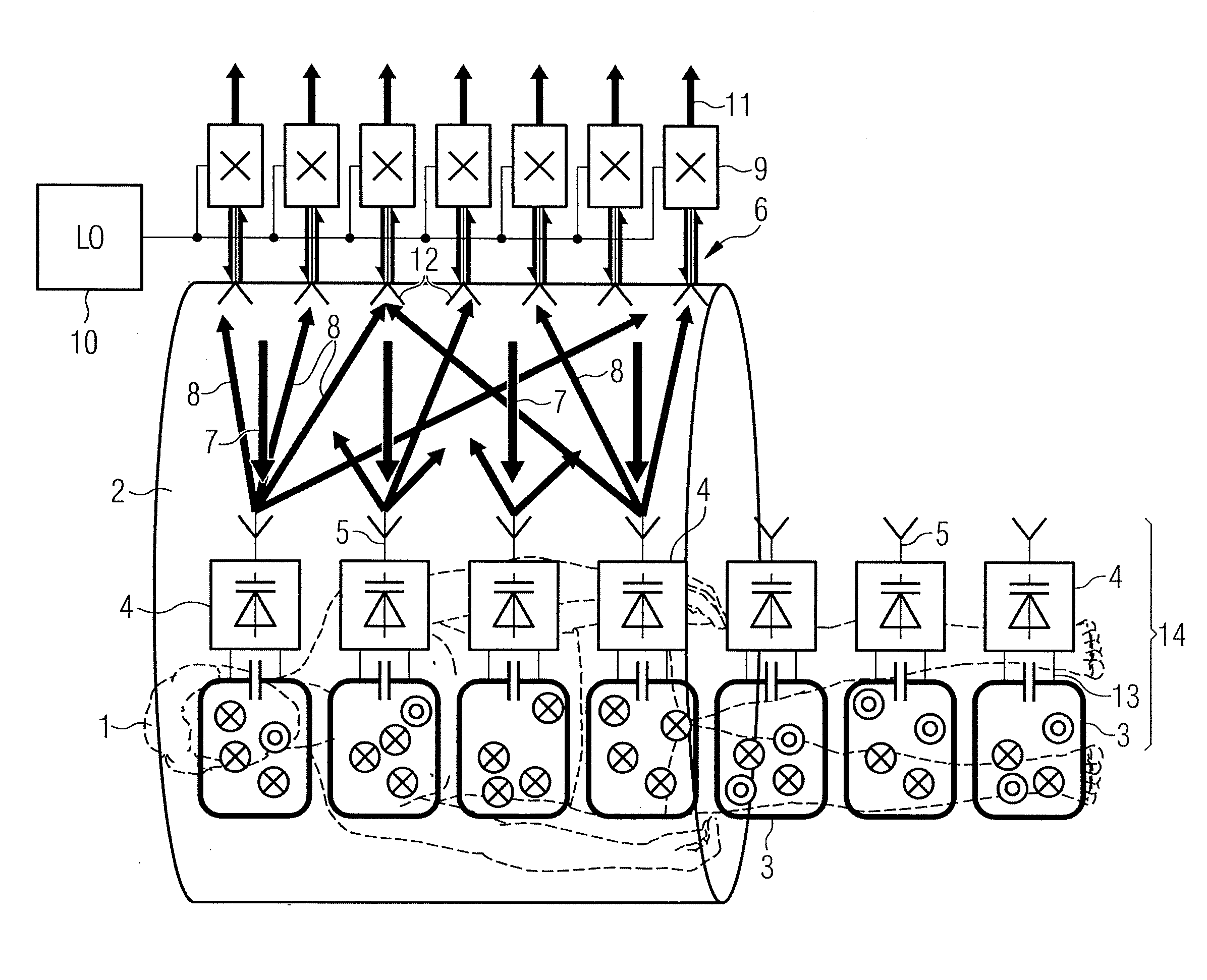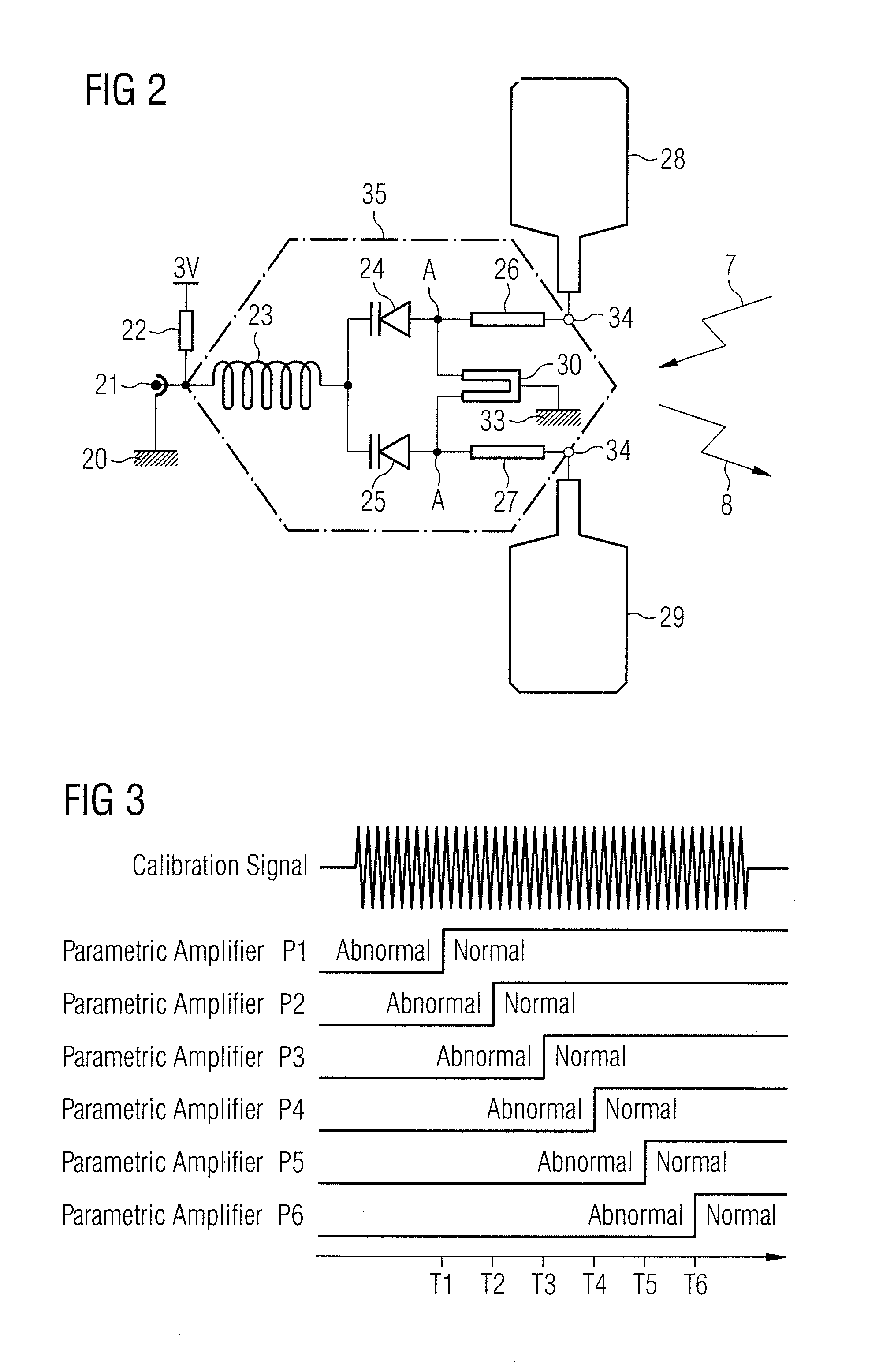Calibration method
a magnetic resonance imaging and motion compensation technology, applied in the direction of transmission systems, sensors, using reradiation, etc., can solve the problems of added cost and inconvenience to the structure, errors introduced into the received signal, and the downtime between scans
- Summary
- Abstract
- Description
- Claims
- Application Information
AI Technical Summary
Benefits of technology
Problems solved by technology
Method used
Image
Examples
Embodiment Construction
[0056]The wireless concept to which the features of the present invention apply is based on upconversion, in the patient mat, of the RF (Larmor) frequency signals from the patient coils to microwave frequencies for transmission to microwave antennas located on the bore of the scanner. The combination of transmit and receive antennas on the patient and bore respectively constitutes a MIMO (Multiple Input / Multiple Output) system. The greater multiplicity of receive antennas in the bore array allows individual signals from a plurality of patient antennas to be resolved. The present invention relates to an implementation of the upconversion process to provide calibration and motion compensation.
[0057]An example of an MRI system using a MIMO microwave link, in which amplifiers in accordance with the present invention are used, will now be described. FIG. 1 shows a patient 1 within an MRI scanner bore tube 2. A mat covers the part of the patient to be imaged and embedded in the mat are a ...
PUM
 Login to View More
Login to View More Abstract
Description
Claims
Application Information
 Login to View More
Login to View More - R&D
- Intellectual Property
- Life Sciences
- Materials
- Tech Scout
- Unparalleled Data Quality
- Higher Quality Content
- 60% Fewer Hallucinations
Browse by: Latest US Patents, China's latest patents, Technical Efficacy Thesaurus, Application Domain, Technology Topic, Popular Technical Reports.
© 2025 PatSnap. All rights reserved.Legal|Privacy policy|Modern Slavery Act Transparency Statement|Sitemap|About US| Contact US: help@patsnap.com



